How To Get Rid Of A Stick-And-Poke Tattoo
Time to erase that stubborn ink with some easy remedies and treatments!
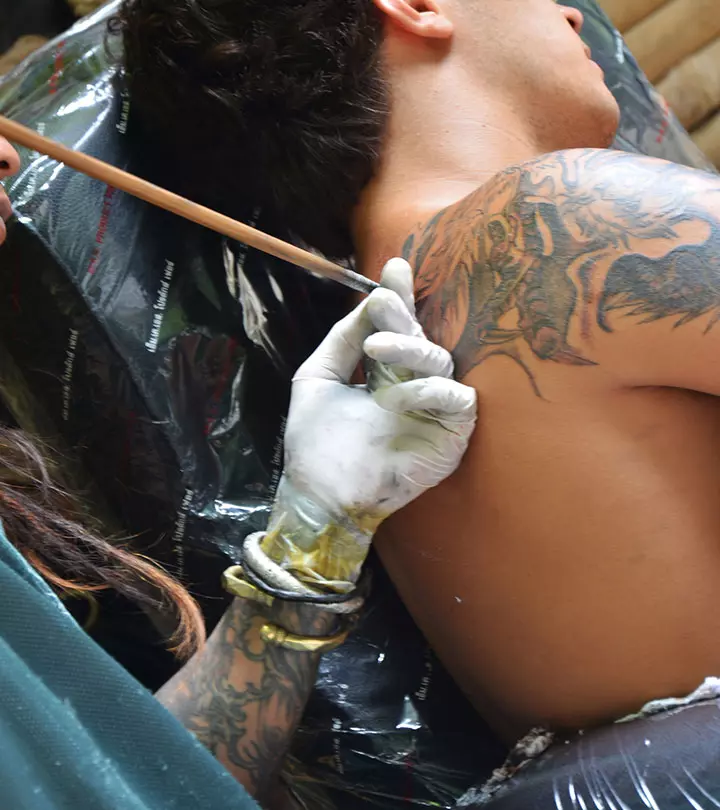
Image: iStock
If you have been wondering how to get rid of a stick-and-poke tattoo but are not sure which method to rely on, you have landed on the right page. Stick-and-poke tattoos are a form of body art created without using a tattoo machine. They are also referred to as a DIY or hand-poked tattoo. This type of tattoo method relies on a simple approach where a professional tattoo artist uses a single needle attached to a stick to manually puncture the skin, depositing the ink deep into the layers to birth a beautiful design. This technique originates from ancient tattooing traditions and has gradually evolved into a popular alternative to machine tattoos. The process involves meticulous precision as the professional artist guides the needle by hand to form the desired design. Keep reading to understand how long the tattoo may last and ways to get rid of it once it fades or becomes dull. Scroll down.
In This Article
How Long Does A Stick-And-Poke Tattoo Last?
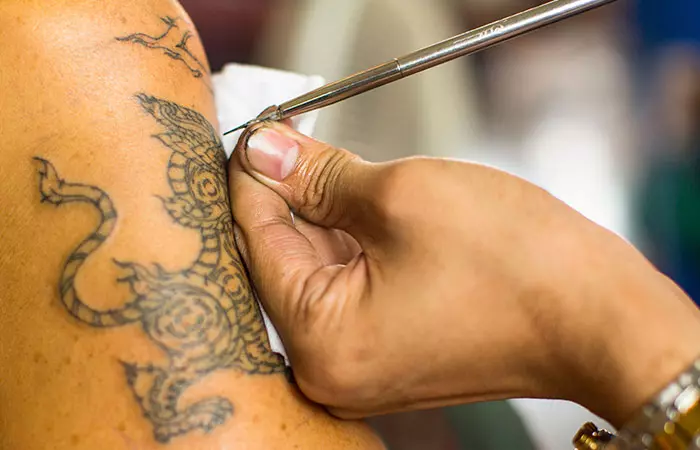
Hand-poked tattoos or stick-and-poke tattoos typically last anywhere from 7 to 10 years or even longer. However, the longevity of such tattoos may vary based on numerous factors, such as an individual’s skin type, ink quality, and aftercare. Other factors like sun exposure, skin moisturization, and rate of skin shedding may also affect the longevity of the tattoos. Moreover, tattoos on certain body parts, such as the fingers, hands, toes, and ankles, may fade faster than tattoos on other body parts. These body parts are exposed to frequent friction, which may impact the longevity of the stick-and-poke tattoo on these areas. Regular touch-ups help refresh the design and extend its longevity.
 Pro Tip
Pro TipIf you have this adornment but somehow have tattoo regrets now, or your tattoo has become dull, and you want to remove it, continue scrolling. The following section explores different effective methods of tattoo removal that can help you get rid of a stick-and-poke tattoo.
Key Takeaways
- The stick-and-poke tattoo method involves creating a design manually using a needle attached to a stick.
- The hand-poked tattoo can last up to 7 to 10 years and even longer with proper aftercare.
- They can be removed using professional treatments like salabrasion, dermabrasion, and effective tattoo removal creams.
- Natural remedies like lemon juice and a mixture of aloe vera and honey may also help fade the tattoos to some extent but aren’t as effective as professional methods.
How To Get Rid Of A Stick-And-Poke Tattoo
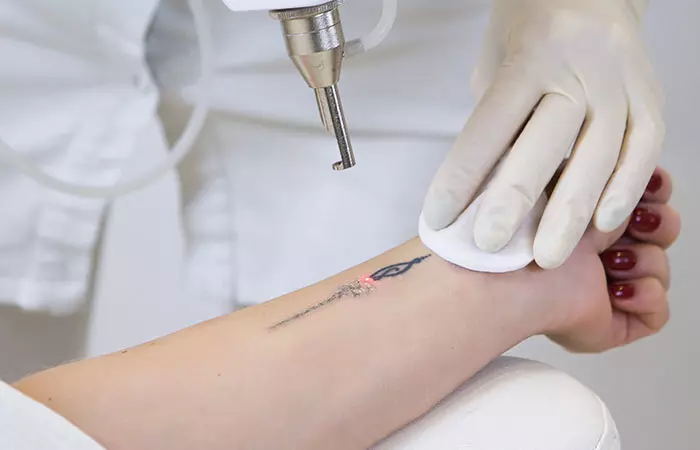
Knowing all the methods on how to remove a tattoo will help you discover the most effective one for your tattoo. There are two methods you can try to get rid of a stick-and-poke tattoo – professional treatments and natural tattoo removal methods. Professional methods are more effective than natural methods. But most people who don’t want to deal with the pain of a tattoo removal procedure tend to opt for natural treatments. However, remember that natural treatment may only lighten the tattoo and not completely remove it. Keep reading to learn more about the professional and natural treatments you may consider.
1. Professional Treatments For Tattoo Removal
- Salabrasion
The tattoo removal method involves rubbing salt on the skin to abrade the surface of the tattooed area. It aims to lift the tattoo particles, thereby eventually causing the tattoo to fade.
- Dermabrasion Using Sand
This method is similar to professional dermabrasion. Unlike professional dermabrasion, which is done using a rotating tool, this method involves using sanding tools to buff away the epidermis (the skin’s top layer). This may diminish the appearance of scars, wrinkles, and even tattoos, resulting in skin regeneration.
- Tattoo Removal Cream
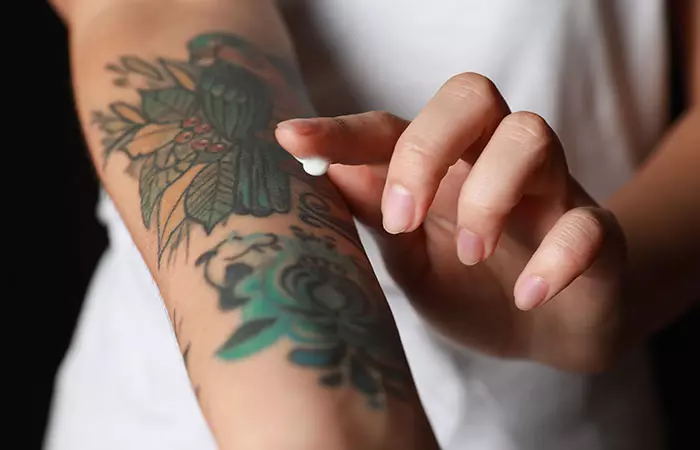
Tattoo removal creams contain chemicals that specifically help to break down the tattoo pigments within the skin. They aim to gradually fade the tattoo, but their effectiveness may vary. Such creams may not guarantee complete tattoo removal and may just fade it.
- Laser Tattoo Removal
You can also opt for a laser treatment to remove stick-and-poke tattoos. However, it is recommended to get it done at a reputed clinic for the best results. In this process, pulses of laser light are released on the tattooed skin. These laser light pulses target the tattoo ink, shattering it into minute particles. The skin is then healed away by its natural regeneration process. There are different types of lasers to choose from. However, the type or wavelength of the laser used depends on factors such as the tattoo ink pigment type, the size of the tattoo, your pain tolerance, and more. It’s best to consult a healthcare professional to determine which type of laser will be suitable for removing your tattoo.
- Surgical Excision
This tattoo removal method involves cutting out the tattooed skin and then stitching up the area. The procedure is effective but leaves a scar, making it a better option for smaller tattoos rather than large, intricate ink pieces.
 Quick Tip
Quick TipBefore choosing any of the above-discussed professional methods, consult a healthcare professional to determine their suitability. They will consider the ink color, how old the tattoo is, and if you have any underlying health conditions. This will help reduce the risk of side effects.
The above professional treatments performed by a tattoo removal specialist may help you get rid of the unwanted tattoo. However, if you still want to try natural methods for tattoo fading, check out the next section.
2. Natural, At-Home Methods For Tattoo Removal
- Lemon Juice

Using fresh lemon juice on the tattooed skin regularly may help get rid of a stick-and-poke tattoo. However, this method requires consistent use over multiple sessions. Lemon contains vitamin C, which exhibits skin-lightening properties (1). This may help in fading the tattoos gradually. To use lemon juice for tattoo removal, dip a small cotton ball in lemon juice and apply it on the tattooed skin. Leave it on for as long as possible and then wash it off. Do this daily for a few weeks to see the desired results. However, remember that the lemon juice may irritate the skin and make it sensitive to UV rays. Therefore, do a patch test beforehand and use SPF when stepping out into the sun.
- Aloe Vera And Honey

According to anecdotal evidence, the brightening properties of honey may help fade the hand-poked tattoo over time, while aloe vera offers nourishment to the skin and soothes it. You can apply the mixture of a teaspoon of each of both natural ingredients daily and expect results in a few months. However, remember that this DIY method may not remove the tattoo completely.
Every tattoo removal method carries some risks with it, be it natural or professional. Learn more about these in detail in the next section.
Risks And Considerations
Removing a stick-and-poke tattoo, whether through natural or professional methods, has its own fair share of risks.
- Natural remedies like lemon juice or salt scrubs may cause skin irritation, scarring, or infection with limited effectiveness.
- Professional removal methods such as laser treatment can lead to burns, pigment changes, or allergic reactions.
Thus always be aware of these risks before deciding on getting the tattoo removed and consult with a dermatologist for ideal guidance.
If you are considering removing your stick-and-poke tattoo, you have a range of options at your disposal. While DIY approaches and natural remedies like aloe vera, honey, and lemon juice may appear easier, they may not offer effective results as professional treatments. Moreover, DIY remedies may take a long time to show some results. Professional methods of tattoo removal, such as salabrasion, tattoo removal ointments and creams, and laser treatments, are quite effective. However, the method that may suit your needs depends on factors like tattoo size, color, and skin type. Therefore, you must consult a dermatologist and work with them to get your tattoo removed professionally.
Frequently Asked Questions
What steps should I take if I face complications during my tattoo removal process?
If any complications arise during the tattoo removal process, then immediately consult a dermatologist for proper guidance. They will suggest the best treatment to prevent infection, scarring, and other skin issues.
Are sticks and pokes safe?
While stick-and-poke tattoos are safe, they may pose risks like infection and uneven healing. Hence, it is important to use sterilized equipment and follow proper aftercare methods.
Can you use pen ink for a stick and poke?
Using pen ink for a stick and poke tattoo is not suggested, as it may contain harmful substances that can increase the risk of infection, leading to numerous adverse effects and health issues. It may also lead to cross-contamination if fresh ink is not used.
Is stick and poke permanent?
Yes, the tattoos can be permanent, lasting from 7 to 10 and even way longer with good aftercare.
What happens if a stick-and-poke gets infected?
Infection from hand-poked tattoos can lead to redness, swelling, skin irritation, discoloration, and even pain. If left untreated, it may even lead to some serious complications. Therefore, consult a doctor if you notice signs of infection in your tattooed area.
Should I ice my stick-and-poke tattoo?
No, it is best to avoid icing stick-and-poke tattoos, as it may damage the skin tissue. Ice can only help numb the skin temporarily and may not be beneficial.
Do stick-and-poke tattoos hurt?
The method may hurt slightly more than a normal tattooing method, as it needs to be done manually. The overall sensation may bring a painful experience.
What ink to use for stick-and-poke?
Use a sterile, professional-grade tattoo ink color that is specifically designed for stick-and-poke tattoos.
Attempting a stick-and-poke tattoo can be tricky, but with the right guidance, you can try this traditional method yourself. Check out the video below for some simple steps on how to do a hand-picked tattoo at home!
References
Articles on StyleCraze are backed by verified information from peer-reviewed and academic research papers, reputed organizations, research institutions, and medical associations to ensure accuracy and relevance. Read our editorial policy to learn more.
- Topical Vitamin C and the Skin: Mechanisms of Action and Clinical Applications
https://www.ncbi.nlm.nih.gov/pmc/articles/PMC5605218/
Read full bio of Bianca Lorena Saldes
Read full bio of Pahul Nanra
Read full bio of Anjali Sayee
Read full bio of Manjari Uppal






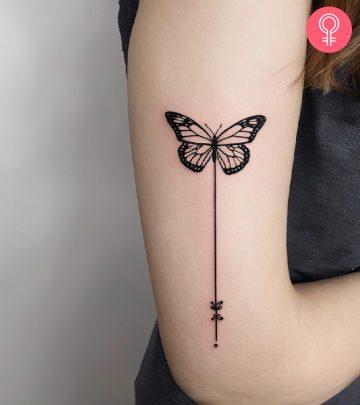

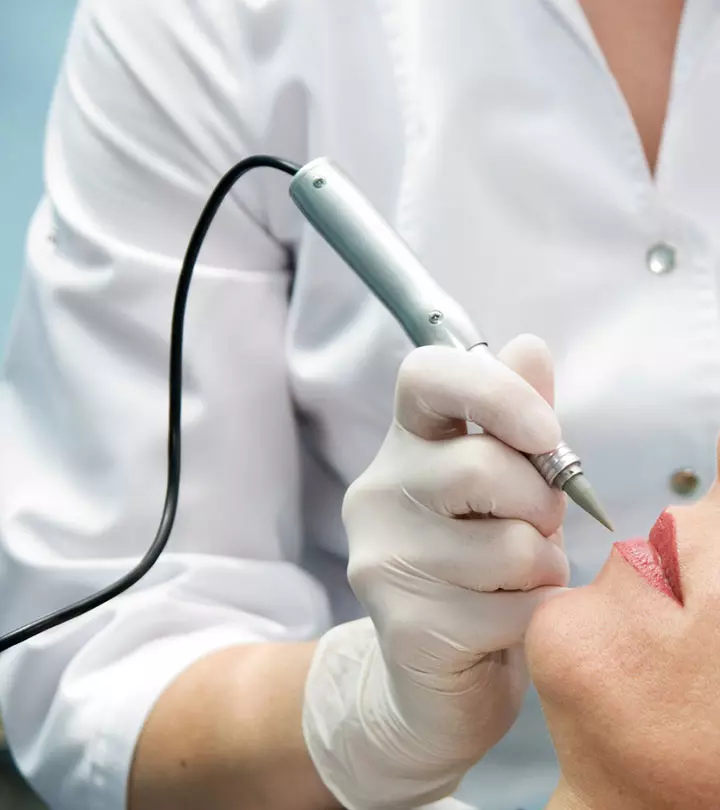


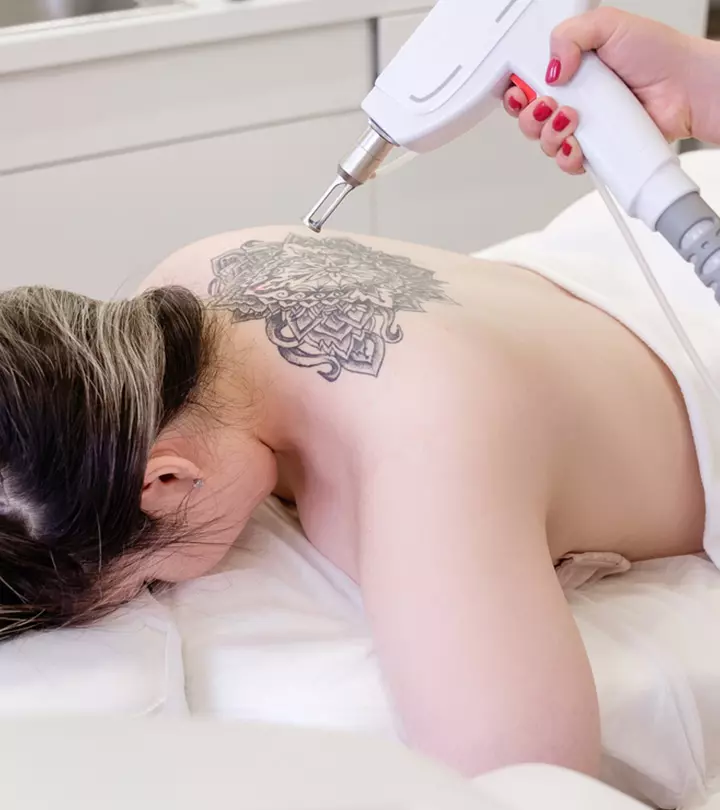

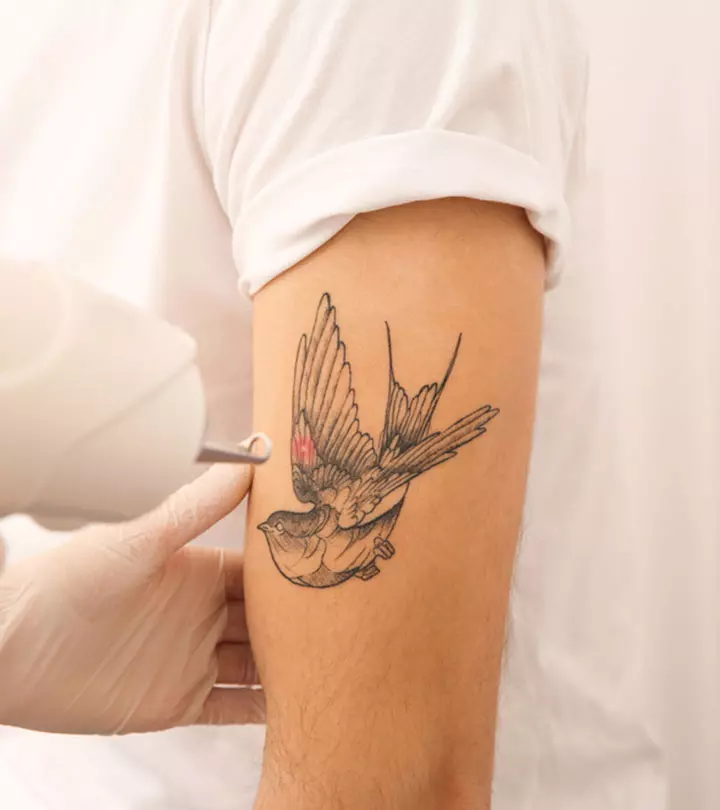


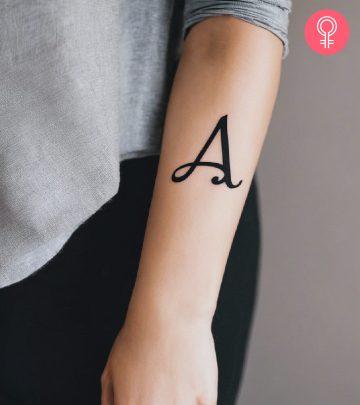
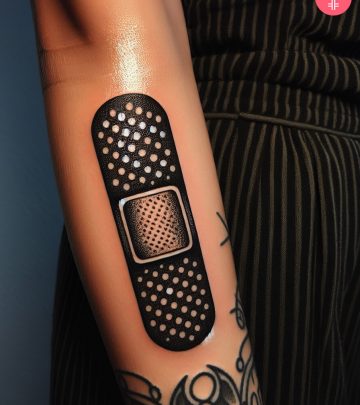
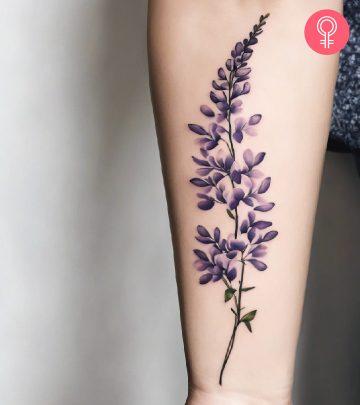
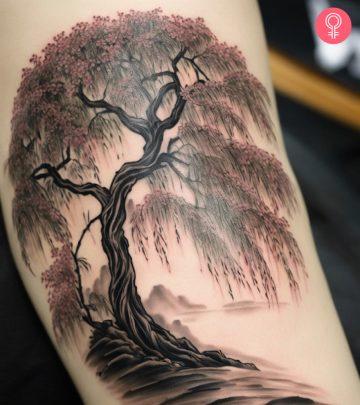

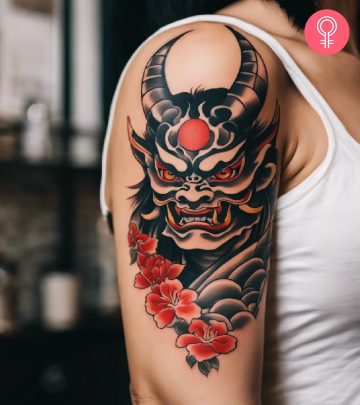



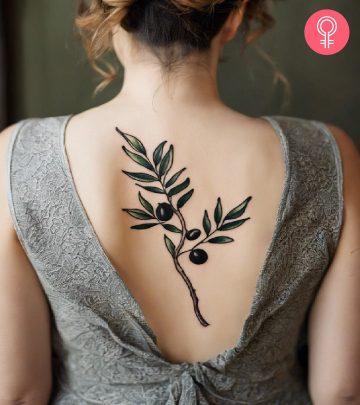
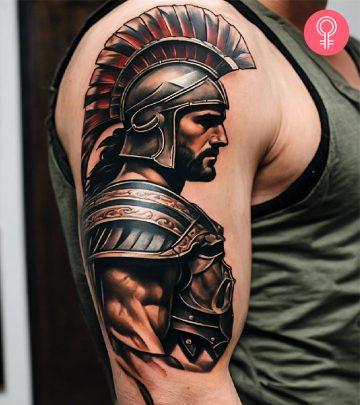
Community Experiences
Join the conversation and become a part of our empowering community! Share your stories, experiences, and insights to connect with other beauty, lifestyle, and health enthusiasts.